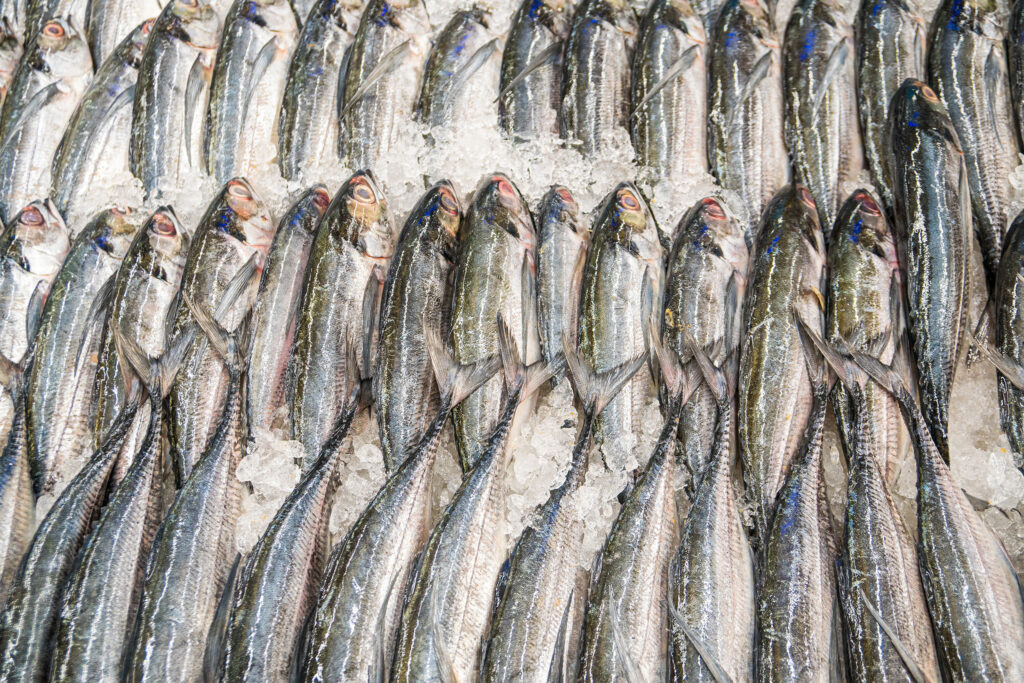
If you have seen my Theme Reveal for the A2Z Challenge 2022, then you will know that I am writing about becoming Vegetarian gradually as a response to the crisis in food supply chains sparked by the pandemic and made worse by the WAR in Ukraine. As well, I am keeping to the theme I originally planned of food which can be eaten in its own right as well as becoming an ingredient in other dishes…

Eating fish and vegetables only, is known as being Pescatarian and it is a good option if you want, or in these economically distressed times, need to reduce your intake of red and white meat. On environmental and ethical grounds, eating fish is not without its problems – overfishing, the inequity of huge trawlers sucking up the fish on which third world countries depend, and the problems of by-catch – so you need to do due diligence if these things concern you – as they should, just as much as issues around meat production should, or the clearing of land for soya or palm oil. The links are there if you want to look into these issues, and the last one, https://www.wwf.org.uk/10-myths-about-deforestation , illustrates how complicated the global issues around food are – even for vegetarians. however, this post is not about that, it’s about using fish as an ingredient and using freezers as a means of preserving food.
Just as with the post on Chorizo, I like to keep prawns in the freezer as an easy way to add protein and flavour to mainly vegetable dishes, usually stir-fried (which can preserve the goodness and flavour of the vegetables well – more of that in a later post). Also in my freezer, because it is a seasonal vegetable, ideal for the freezing process, are frozen peas. Defrost frozen peas and eat them raw, and you will very nearly capture the straight from the pod sweetness of this lovely little vegetable. When I briefly had a restaurant, my wholesaler stocked large bags of frozen Butter Beans that were a revelation! Previously, since childhood, I was familiar with canned butter beans, which were okay, and then I progressed to soaking and cooking dried butter beans. As one of the largest beans, dried butter beans are difficult to cook without losing the skins and turning to mush – so I can’t stress enough how great butter beans frozen from fresh are. I suppose there are places where butter beans are grown and available fresh, but frozen is the next best thing. Canning is an older process, and once perfected in the 19th century, it revolutionised the storage of food. It is still more energy efficient than freezing, in part because, once frozen, you have to keep the food frozen, and whilst canned food is tasty, freezing probably has the edge on taste. As a child, many was the hour we spent assisting my parents to process trays of peaches brought from the market at peak season and bottled in Kilner Jars – the home equivalent and precursor of canning. Ah! The satisfaction of a larder with shelves packed with those colourful jars and the anticipation of meals to come – but my parents moved with the times, and kilner jars were replaced, for the most part, with a chest freezer.

Kilner Jars have made a comeback in recent years, and if energy conservation is your thing, and you have a good size larder, then give them a go as an alternative to the freezer for home preserving and take advantage of seasonal gluts…
Going back to fish as an ingredient, there are a huge range of fish sauces, powdered fish and fish pastes – mainly from South-East Asia – that you can add to dishes to enrich the flavour – and mostly, these ingredients pack a flavour punch that can knock your socks off! But lest you think that those are exclusively Asian, the Romans also made a fish sauce called Garum.
Back in the days of my restaurant, the last dish I prepared before service, was often a fish pie, because much of the cooking was done in a large wok and once topped with mashed potato, it just needed a relatively short time in the oven to brown the potato and for the fish base flavours to mingle.
Frewin’s Fish Pie
1. Obtain a fish pie mix from your fishmonger, it will likely contain cod, smoked haddock, and salmon, or you could purchase these separately and create your own mix.
2. Boil potatoes sufficient to make a topping for the fish pie – unless you are doing fine dining, I like to leave the skins on for the goodness therein. While the potatoes cook – in a large wok or saucepan, fry celery chopped into half-inch pieces – celery is tough and has a lot of water, unlike onions which burn easily, so add the onions second and stir occasionally till the onions are starting to go translucent.
3. Add very thinly sliced carrots or pre-cooked carrots.
4. Add some butter before adding the fish mix. This butter will help the fish not too stick but will also form the basis of the sauce. Cook, stirring well until the fish loses its translucency.
5. Add some wholegrain mustard to taste plus either fresh or dried dill leaf – this is a classic combination of flavours with fish, especially in Scandinavia. You can add frozen peas at this stage too if you want.
6. Add a little plain flour and stir until it soaks up the butter and then quickly add and stir well, a little milk until it combines with the butter/flour to form a roux. Lower the heat right down and stir in cream and season to taste – transfer the mixture to a casserole dish large enough to have room for the mashed potato topping. Carefully add the mashed potato trying to seal the whole surface over the fish base and score with a fork. Dot butter over the scored surface and/or grated cheese if you fancy it more luxurious and bake in a moderately hot oven until the potato topping is nicely brown. You can eat straight away or leave to rest or cool and refrigerate for reheating the next day and of course, you can put some portions in the freezer for another day!
Apologies for the lack of quantities, but this is a dish in which you may vary the ingredients according to taste and what is available – for example, you can make a smaller amount of fish go further by adding mushrooms, you can add a little acid note with chopped gherkins or capers – I never wrote my recipe down before – so take it as guidance only – Bon appetit!